

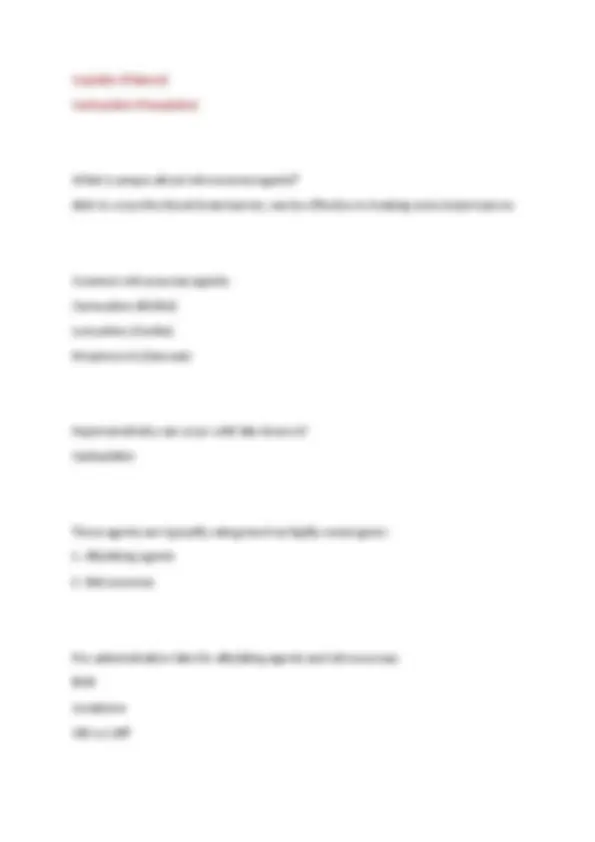
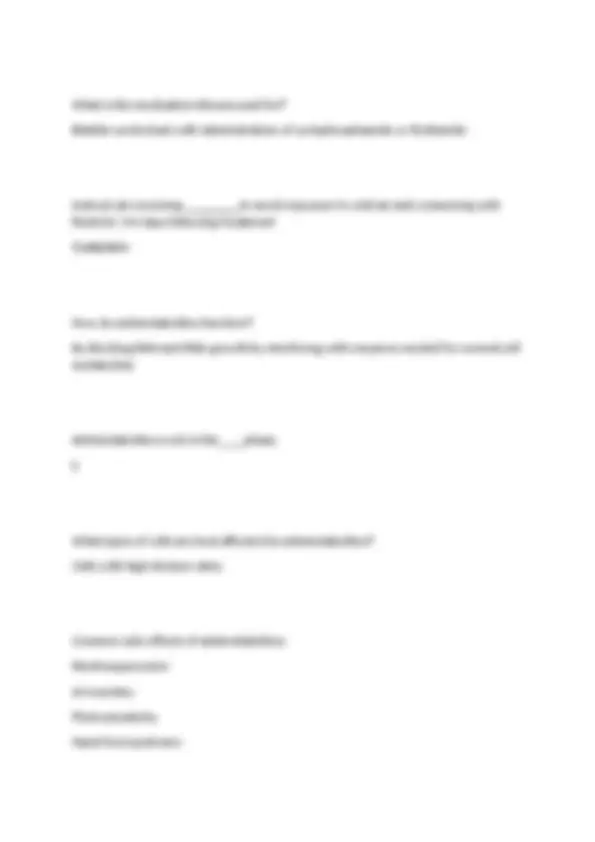
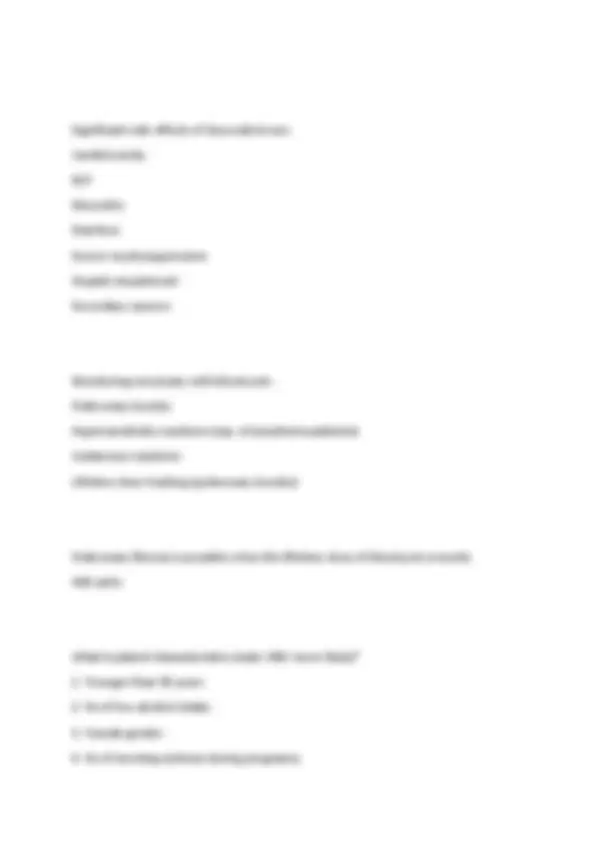
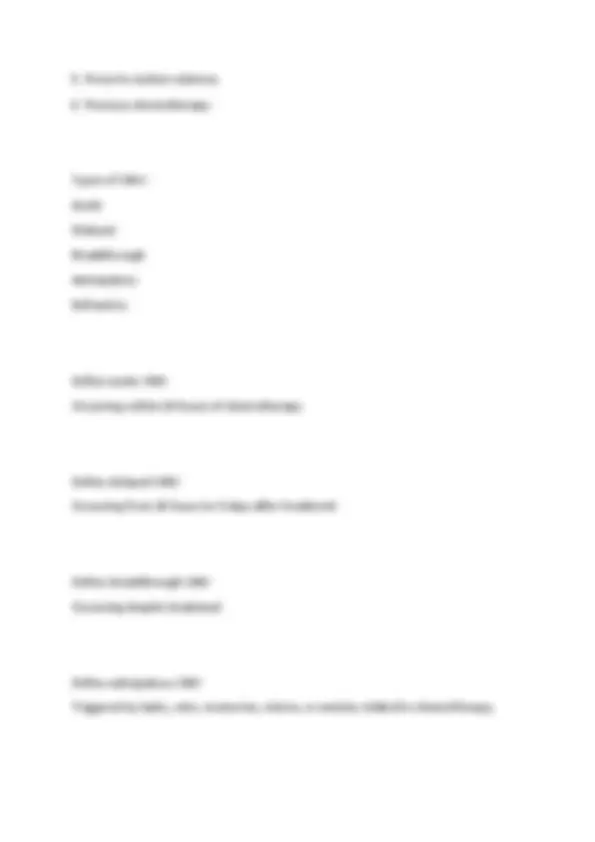
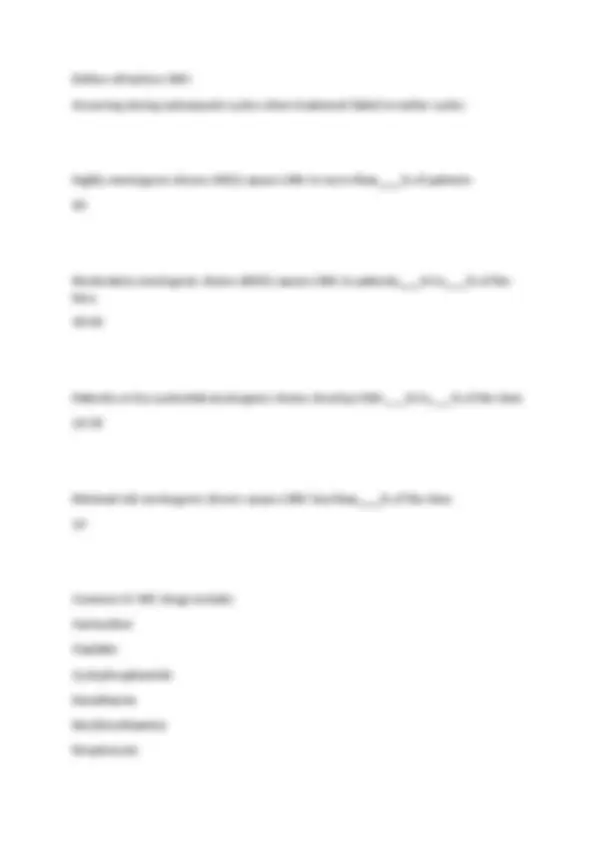
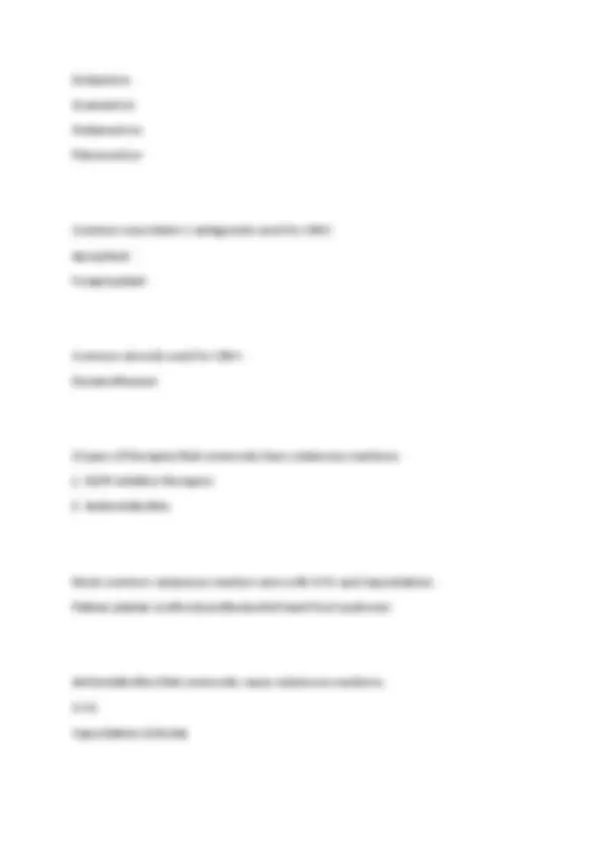
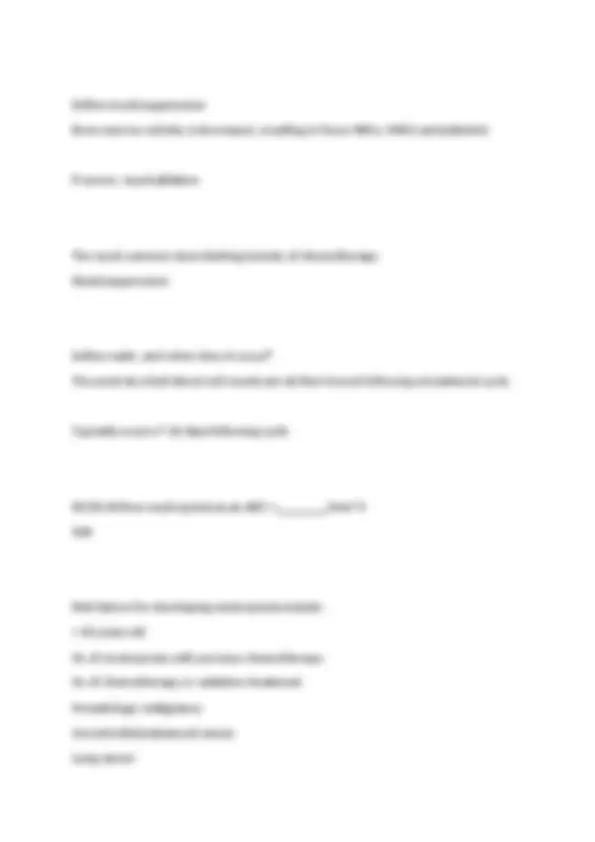
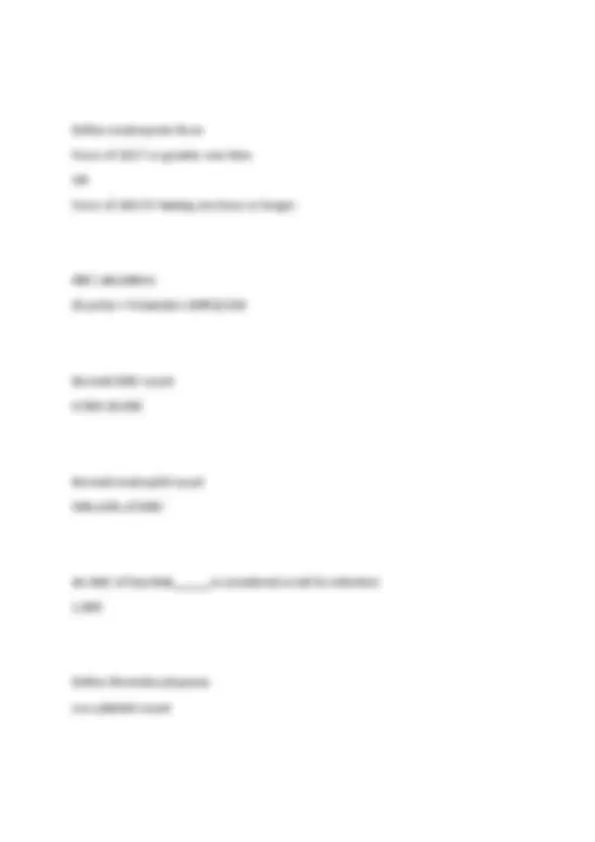
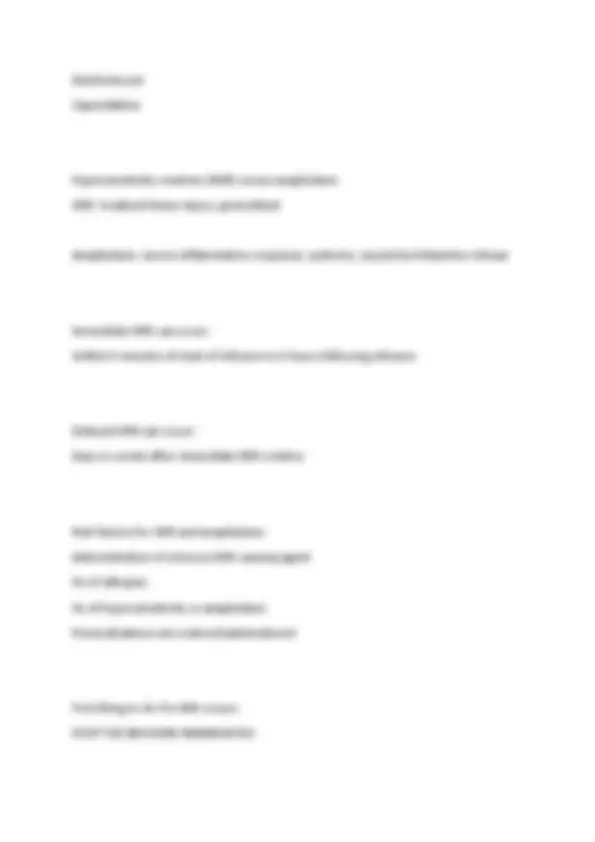
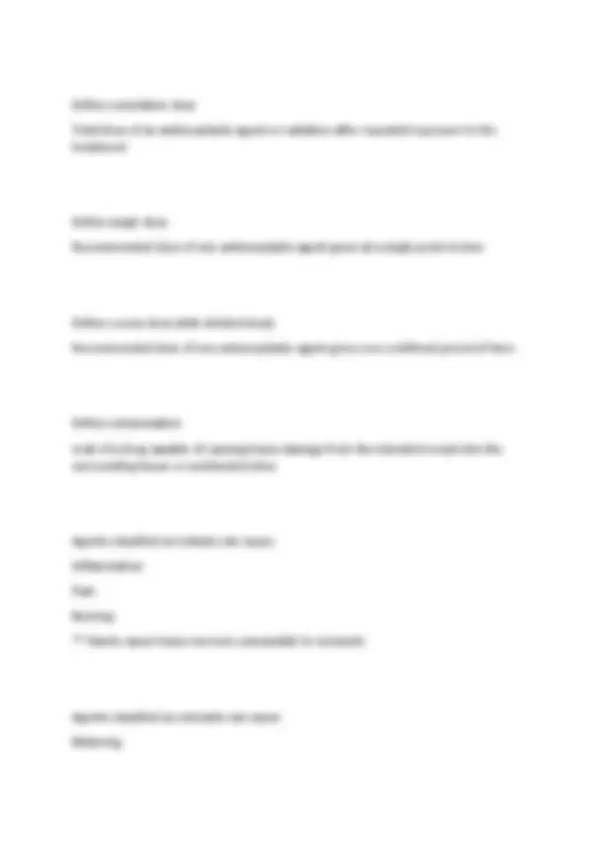



Study with the several resources on Docsity

Earn points by helping other students or get them with a premium plan


Prepare for your exams
Study with the several resources on Docsity

Earn points to download
Earn points by helping other students or get them with a premium plan
Community
Ask the community for help and clear up your study doubts
Discover the best universities in your country according to Docsity users
Free resources
Download our free guides on studying techniques, anxiety management strategies, and thesis advice from Docsity tutors
The key topics related to the ons/oncc chemotherapy immunotherapy certificate exam, including the phases of cell division, innate and adaptive immunity, types of cancer treatments, mechanisms of action for various chemotherapy drug classes, management of chemotherapy-induced nausea and vomiting (cinv), and common side effects of chemotherapy. Detailed information on the exam content, making it a valuable resource for students preparing for the certification exam. The comprehensive coverage of the subject matter, including definitions, classifications, and clinical considerations, suggests this document could be useful as study notes, lecture notes, or a summary for university-level courses related to oncology, pharmacology, or nursing.
Typology: Exams
1 / 20

This page cannot be seen from the preview
Don't miss anything!













3 major phases of cell division: Interphase Mitotic phase Cytokinesis 3 steps of interphase: First growth phase (G1) Synthesis phase (S phase) Second growth phase (G2) 4 phases of mitosis: Prophase Metaphase Anaphase Telophase Innate immunity: Non-specific response, either:
Cisplatin (Platinol) Carboplatin (Paraplatin) What is unique about nitrosoureas agents? Able to cross the blood-brain barrier; can be effective in treating some brain tumors Common nitrosoureas agents: Carmustine (BiCNU) Lomustine (CeeNu) Streptozocin (Zanosar) Hypersensitivity can occur with late doses of: Carboplatin These agents are typically categorized as highly emetogenic:
What is the medication Mesna used for? Bladder protectant with administration of cyclophosphamide or ifosfamide Instruct pts receiving _ to avoid exposure to cold air and consuming cold fluids for 3 - 4 days following treatment Oxaliplatin How do antimetabolites function? By blocking DNA and RNA growth by interfering with enzymes needed for normal cell metabolism Antimetabolites work in the phase. S What types of cells are best affected by antimetabolites? Cells with high division rates Common side effects of antimetabolites: Myelosuppression GI toxicities Photosensitivity Hand-foot syndrome
Doxorubicin Epirubicin Idarubicin The antitumor abx is not an anthracycline, but has anthracycline-type properties. Mitoxantrone Common non-anthracycline antitumor abx: Actinomycin D Mitomycin C Bleomycin Monitoring necessary with doxorubicin: Vesicant --> extravasation Cardiac function Lifetime dose tracking (cardiotoxicity) Lifetime dose of doxorubicin should not exceed: 550 mg/m^ What cardiac protectant medication can be administered prior to doxorubicin? Dexrazoxane
Significant side effects of doxorubicin are: Cardiotoxicity N/V Mucositis Diarrhea Severe myelosuppression Hepatic impairment Secondary cancers Monitoring necessary with bleomycin: Pulmonary toxicity Hypersensitivity reactions (esp. in lymphoma patients) Cutaneous reactions Lifetime dose tracking (pulmonary toxicity) Pulmonary fibrosis is possible when the lifetime dose of bleomycin exceeds: 400 units What 6 patient characteristics make CINV more likely?
Define refractory CINV Occurring during subsequent cycles when treatment failed in earlier cycles Highly emetogenic chemo (HEC) causes CINV in more than % of patients 90 Moderately emetogenic chemo (MEC) causes CINV in patients % to % of the time 30 - 90 Patients on low-potential emetogenic chemo develop CINV % to % of the time 10 - 30 Minimal-risk emetogenic chemo causes CINV less than % of the time 10 Common IV HEC drugs include: Carmustine Cisplatin Cyclophosphamide Dacarbazine Mechlorethamine Streptozosin
Common IV MEC drugs include: Carboplatin Cytarabine Daunorubicin Doxorubicin Epirubicin Idarubicin Ifosfamide Irinotecan Oxaliplatin Common low-potential IV emetogenic chemo drugs include: 5 - FU Cytarabine Docetaxel Etoposide Gemcitabine Methotrexate Mitomycin C Mitoxantrone Paclitaxel Pemetrexed Common minimal-risk IV emetogenic chemo drugs include:
Dolasetron Granisetron Ondansetron Palonosetron Common neurokinin-1 antagonists used for CINV: Aprepitant Fosaprepitant Common steroids used for CINV: Dexamethasone 2 types of therapies that commonly have cutaneous reactions:
Define myelosuppression Bone marrow activity is decreased, resulting in fewer RBCs, WBCs and platelets If severe: myeloablation The most common dose-limiting toxicity of chemotherapy Myelosuppression Define nadir, and when does it occur? The point at which blood cell counts are at their lowest following a treatment cycle. Typically occurs 7 - 10 days following cycle NCCN defines neutropenia as an ANC < /mm^ 500 Risk factors for developing neutropenia include:
65 years old Hx of neutropenia with previous chemotherapy Hx of chemotherapy or radiation treatment Hematologic malignancy Uncontrolled/advanced cancer Lung cancer
Symptoms of thrombocytopenia Petechiae or easily bruising Headaches Hypotension and tachycardia Prolonged bleeding (gums, menstruation) Define anemia Deficiency of RBC or hemoglobin in the blood Symptoms of anemia Dyspnea Fatigue Dizziness Headaches Acute diarrhea lasts: 1 - 2 days and resolves on its own Persistent diarrhea lasts: 2 - 4 weeks Chronic diarrhea lasts:
4 weeks
Common constipation-causing agents: Vinca alkaloids (vincristine and vinorelbine) Thalidomide Lenalidomide Bortezomib Define mucositis Inflammation of the mucous membranes lining the digestive tract from mouth to anus Define stomatitis Inflammatory conditions of the mouth specifically AKA oral mucositis Define xerostomia Dryness of the mouth caused by damage to or dysfunction of the salivary glands Common diarrhea-causing agents: Irinotecan 5 - FU Paclitaxel
Define cumulative dose Total dose of an antineoplastic agent or radiation after repeated exposure to the treatment Define single dose Recommended dose of one antineoplastic agent given at a single point in time Define course dose (AKA divided dose) Recommended dose of one antineoplastic agent given over a defined period of time Define extravasation Leak of a drug capable of causing tissue damage from the intended vessel into the surrounding tissue or unintended sites Agents classified as irritants can cause: Inflammation Pain Burning ** Rarely cause tissue necrosis comparable to vesicants Agents classified as vesicants can cause: Blistering
Significant pain Tissue damage and destruction **Lead to tissue death